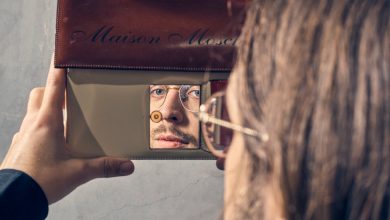Exploring the Health Effects of Ageism

Each fall, Becca Levy asks the students in her health and aging class at the Yale School of Public Health to picture an old person and share the first five words that come to mind. Don’t think too much, she tells them.
She writes their responses on the board. These include admiring words like “wisdom” and “creative” and roles such as “grandmother.” But “‘senility’ comes up a lot,” Dr. Levy said recently, “and a lot of physical infirmity and decline: ‘stooped over,’ ‘sick,’ ‘decrepit.’”
Dr. Robert N. Butler, a psychiatrist, gerontologist and founding director of the National Institute on Aging, coined the term “ageism” a half-century ago. It echoes “sexism” and “racism,” describing the stereotyping of and discrimination against older adults.
Among the mementos in Dr. Levy’s small office at Yale is a treasured photo of her and Dr. Butler, who died in 2010. One could argue that she is his heir.
A psychologist and epidemiologist, Dr. Levy has demonstrated — in more than 140 published articles over 30 years and in a new book, “Breaking the Age Code” — that ageism results in more than hurt feelings or even discriminatory behavior. It affects physical and cognitive health and well-being in measurable ways and can take years off one’s life.
“Just as we have learned in recent decades that structures are biased against women and people of color, leading to worsened health outcomes, she has shown that negative feelings about old age lead to bad outcomes in older people,” said Dr. Louise Aronson, a geriatrician at the University of California, San Francisco, and author of the best-selling book “Elderhood.”
Another memento in Dr. Levy’s office is a card on her bulletin board that reads, “Ask Me About 7.5.” The souvenir came from a Wisconsin anti-ageism campaign and refers to her 2002 longevity study, which for two decades followed hundreds of residents older than 50 in a small Ohio town. The study found that median survival was seven and a half years longer for those with the most positive beliefs about aging, compared with those having the most negative attitudes.
“I use that in practically every talk I give because it’s shocking,” said Tracey Gendron, who chairs the gerontology department at Virginia Tech and credits Dr. Levy’s work in “Ageism Unmasked,” her own recent book. “She’s truly been a pioneer.”
Dr. Levy and her team measure attitudes about aging in a variety of ways. They use questionnaires or the same five-word exercise she gives to her students. They test subliminal biases using computer programs that flash negative or positive words about aging so quickly that participants inadvertently absorb them. They have used small experimental samples of a few dozen people and tracked health records for thousands through big national surveys. Thanks to their efforts, we know that beyond reduced longevity, ageism is also associated with:
-
Cardiovascular events, including heart failure, strokes and heart attacks. Using health records for almost 400 participants under 50 in the Baltimore Longitudinal Study of Aging, “we’ve been able to follow people for 40 years,” Dr. Levy said in an interview. “They had twice as high a risk if, at young ages, they’d taken in negative stereotypes about aging.” Their cardiovascular events occurred at earlier ages, too.
-
Physical function. Among 100 older people (whose average age was 81), those exposed to implicit positive age stereotypes weekly for a month scored better on tests of gait, strength and balance than control groups did. In fact, those receiving positive exposure improved more than a similar-aged experimental group that exercised for six months. In a study of New Haven residents over 70, those with positive age beliefs were also more likely to recover fully from severe disability than those with negative beliefs.
-
Alzheimer’s disease. Some participants in the Baltimore study underwent regular brain scans, and some donated their brains for autopsies. Those who held more negative age beliefs at younger ages exhibited a sharper decline in the volume of the hippocampus, the brain region associated with memory. They also exhibited, after their deaths, more of the brain plaques and tangles that are Alzheimer’s biomarkers.
Another study used data from the national Health and Retirement Survey that included whether participants carried the APOE4 gene, which increases the risk of Alzheimer’s. Those with the gene who had positive age beliefs “had as low a risk as people without the gene,” Dr. Levy said.
The list goes on. Older people with positive views of aging perform better on hearing tests and memory tasks. They are less likely to develop psychiatric illnesses like anxiety, depression, post-traumatic stress disorder and suicidal thoughts.
In fact, Dr. Levy and her colleagues estimate that age discrimination, negative age stereotypes and negative self-perceptions of aging lead to $63 billion in excess annual spending on common health conditions like cardiovascular and respiratory disease, diabetes and injuries.
Dr. Levy, who is 55, credits her focus on aging to an after-college job at a psychiatric hospital in suburban Boston, a graduate fellowship in Japan and an errant crate in a Florida grocery store.
At the hospital, she worked in a unit for older patients and, to her surprise, enjoyed it. “It inspired me to want to understand the psychology of aging,” she said.
Later, she planned to spend a semester in Japan, investigating why its residents have the world’s longest life spans. “I noticed how differently older people were treated there,” she said. “They were celebrated. Centenarians were rock stars!”
Before leaving for Japan, though, she visited her grandmother, a lively septuagenarian. They were shopping together when Grandma Horty fell over a crate with jagged metal corners that had been left in the aisle.
The resulting cut on her leg, though bloody, proved superficial. But when her grandmother suggested to the grocery owner that he not leave crates about, he responded that old people fall all the time, and maybe they shouldn’t be walking around.
“The message stayed with her, and it seemed to impact her behavior,” Dr. Levy noticed. Her grandmother appeared to question her competence, asking Dr. Levy to take over chores she normally handled herself. The incident prompted Dr. Levy to contemplate how cultural values and people’s own ideas about age might affect them.
We absorb these stereotypes from an early age, through disparaging media portrayals and fairy tales about wicked old witches. But institutions — employers, health care organizations, housing policies — express a similar prejudice, enforcing what is called “structural ageism,” Dr. Levy said. Reversing that will require sweeping changes — an “age liberation movement,” she added.
But she has found reason for optimism: Damaging ideas about age can change. Using the same subliminal techniques that measure stereotypical attitudes, her team has been able to enhance a sense of competence and value among older people. Researchers in many other countries have replicated their results.
“You can’t create beliefs, but you can activate them,” Dr. Levy said, by exposing people to words like “active” and “full of life,” instead of “grumpy” or “helpless,” to describe older adults.
Could a society undertake such a mission? How long could the benefits of such interventions last? Would people need regular boosters to help associate aging with experience and possibilities instead of with nervous jokes?
The research, by Dr. Levy and other scholars, continues.
“Even though toddlers already have negative stereotypes about age, they’re not set in stone,” Dr. Levy said. “They’re malleable. We can shift them.”





